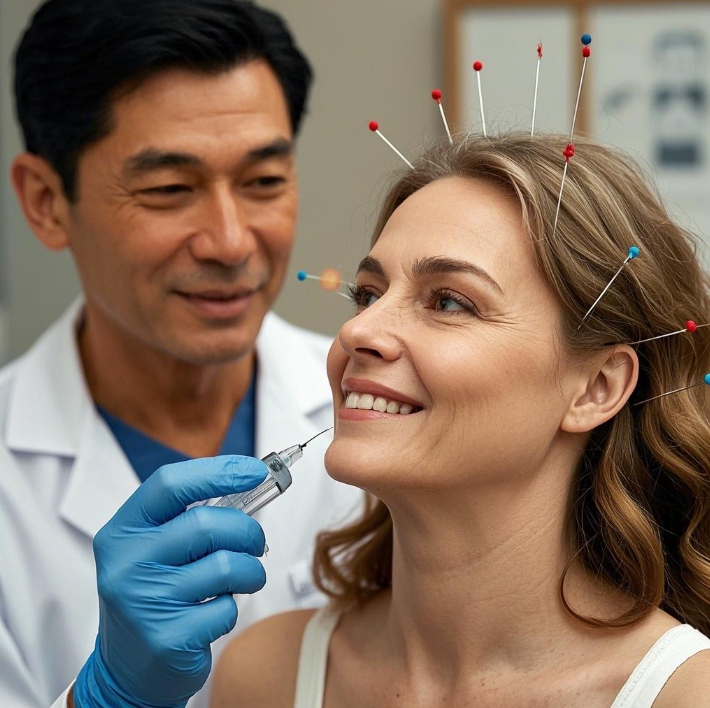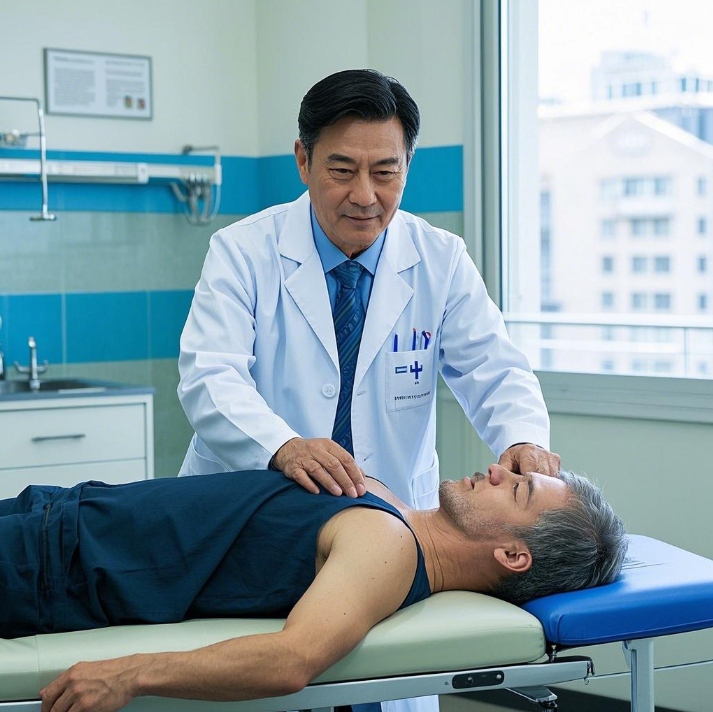What else can we get from traditional Chinese medicine besides grounding
Traditional Chinese External Therapies
Traditional Chinese Medicine (TCM) offers a variety of external therapies that have been used for centuries to promote health and treat diseases. Below is a detailed explanation of three key TCM external therapies: Acupuncture, Tui Na, and Cupping & Gua Sha.
1. Acupuncture (针灸)

Core Concept
Acupuncture is a therapeutic technique that involves inserting fine needles into specific points on the body, known as acupoints, to regulate the flow of Qi (vital energy) and blood. It is based on the principles of Traditional Chinese Medicine (TCM), particularly the meridian system, which connects the body's organs and functions.
Key Techniques
- Needle Insertion: Thin, sterile needles are inserted at varying depths (usually 0.5 to 1.5 inches) into acupoints. For example, the "Zusanli" point (ST36) on the leg is often used to boost energy and improve digestion.
- Manipulation: After insertion, the practitioner may twist, lift, or thrust the needles to enhance the therapeutic effect. This is known as "De Qi," a sensation of soreness, numbness, or warmth felt by the patient, indicating the activation of Qi.
- Electroacupuncture: A modern adaptation where a small electric current is applied to the needles to stimulate the acupoints more intensively, often used for pain management or neurological conditions.
Applications
- Pain Relief: Effective for chronic pain conditions like migraines, arthritis, and lower back pain. Studies suggest acupuncture stimulates the release of endorphins, the body's natural painkillers.
- Stress and Anxiety: Acupuncture can regulate the nervous system, promoting relaxation and reducing cortisol levels.
- Digestive Disorders: Points like "Neiguan" (PC6) are used to alleviate nausea and improve gastrointestinal function.
Scientific Support
Research shows acupuncture can modulate brain activity, increase blood flow, and influence neurotransmitter levels, providing a scientific basis for its efficacy.
2. Tui Na (推拿)

Core Concept
Tui Na, often referred to as Chinese medical massage, is a hands-on therapy that uses various manual techniques to stimulate acupoints, muscles, and joints. It aims to balance Qi and blood flow, relieve tension, and promote healing.
Key Techniques
- Rolling (㨰法): The practitioner uses the forearm to apply a rolling motion over large muscle groups, such as the back or thighs. This technique is particularly effective for treating soft tissue injuries and improving circulation.
- Kneading (揉法): Circular pressure is applied with the palms or fingers to acupoints or sore areas, helping to relax muscles and reduce pain.
- Pressing (按法): Firm pressure is applied to specific points, such as the "Hegu" point (LI4) on the hand, to relieve headaches or toothaches.
- Stretching (拉法): Gentle pulling or stretching of limbs to improve joint mobility and relieve stiffness.
Applications
- Musculoskeletal Disorders: Effective for treating conditions like neck pain, sciatica, and sports injuries.
- Pediatric Care: Gentle Tui Na techniques are used for children to address issues like poor digestion or sleep disturbances.
- Rehabilitation: Often combined with acupuncture to enhance recovery after surgery or injury.
Scientific Support
Tui Na has been shown to reduce inflammation, improve blood circulation, and stimulate the release of endorphins, making it a valuable complementary therapy.
3. Cupping and Gua Sha (拔罐与刮痧)

Core Concept
Cupping and Gua Sha are traditional techniques that use suction and scraping to stimulate the skin and underlying tissues, promoting blood flow and releasing toxins. Both methods are rooted in the TCM belief that stagnation of Qi and blood leads to disease.
Cupping (拔罐)
- Technique: Glass, bamboo, or silicone cups are placed on the skin after creating a vacuum (by heat or suction). The suction pulls the skin and underlying tissues upward, creating a localized expansion.
- Types:
- Dry Cupping: Cups are left in place for 5-15 minutes.
- Wet Cupping: Small incisions are made on the skin before applying the cups to draw out small amounts of blood, believed to remove toxins.
- Applications:
- Pain Relief: Effective for muscle tension, fibromyalgia, and arthritis.
- Respiratory Issues: Used to alleviate symptoms of asthma and bronchitis by improving lung function.
- Detoxification: Believed to help remove metabolic waste and improve circulation.
Gua Sha (刮痧)
- Technique: A smooth-edged tool (often made of jade or horn) is used to scrape the skin in long strokes, typically along the meridians. This creates mild bruising or "sha," which indicates the release of stagnant blood and Qi.
- Applications:
- Fever and Colds: Gua Sha is commonly used to reduce fever and relieve symptoms of the common cold.
- Chronic Pain: Effective for conditions like frozen shoulder or carpal tunnel syndrome.
- Cosmetic Benefits: Improves facial circulation and reduces puffiness, leading to its use in facial Gua Sha.
